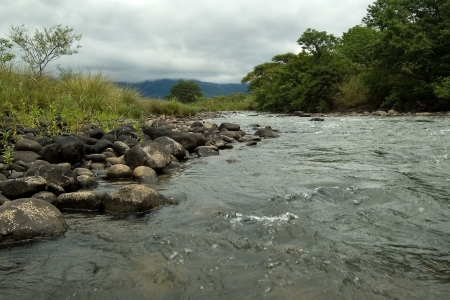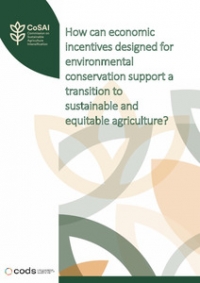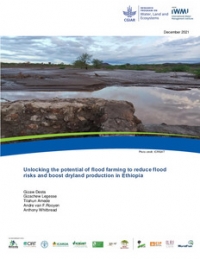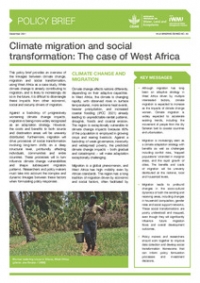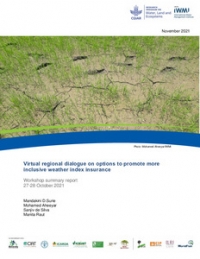Growing pressure on water resources and ecosystem services in Vietnam’s Red River Basin is causing problems for local people and decision makers. Polluted waterways, lack of water for households and industry, flooding, and saline intrusion are some of the symptoms of this pressure, and without corrective action these problems will become more aggravated.
The complexity of both the causes and results of these issues is such that a combination of approaches and tools is needed to address water resource challenges in a more integrated way. A WLE Greater Mekong project, Inclusive development paths for healthy Red River landscapes based on ecosystem services, has been working for two years with decision makers, researchers and communities in the Red River Basin to increase understanding of water resources and the threats they face, and to devise practical and sustainable ways of safeguarding ecosystem services.
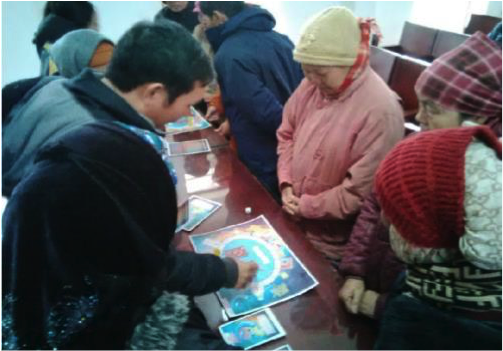
The project, also known as MK27, brought together government planners from Vietnam’s National Centre for Water Resources Planning and Investigation and the Institute of Water Resources Planning, along with scientists from Thuy Loi University, and Hanoi University of Natural Resources and Environment (HUNRE) plus the GreenID NGO. Adding international expertise were the International Water Management Institute, UNESCO-IHE, Delft University of Technology and Dutch consultants FutureWater.
As it has explored the extent and cause of environmental problems, this partnership between local organizations, local researchers and international researchers has built applied research capacity on the ground in Vietnam.
The different scales which the project works at are helping to address the gaps in planning capacity and data collection at various levels in Vietnam. At scientific and policy levels, there is now growing recognition of the need to expand national data collection and monitoring capacity by embracing remote-sensing technologies to complement the existing network of field-based monitoring stations. The project also developed ecosystem services sheets through the water accounting system, which provides consistent and coherent information on water resources and associated services such as irrigation. This provides national planners with an extra tool that can readily evaluate the state of water resources and the likely effects of infrastructure investments and other interventions.
At the community level, the project has shown the value of engaging ordinary people in the assessment of water resource health and in the planning of local actions that can help them move forward in ways that will help ecosystems recover and function healthily. Citizen science projects have been trialled to engage volunteers in recording local water quantity and quality through smartphones, thereby increasing the scope of the existing ground monitoring network. Awareness of the environmental consequences of everyone’s actions has been boosted through the development of games that can be played in schools and in public parks and streets. Another “serious game” that the project developed helps people understand and give qualitative evaluations of ecosystem services.
By working with local communities in the basin the project was able to identify a range of scenarios for the future socio-economic development at local level and then model how these scenarios would affect water resources. Together with the community, strategies can then be identified to help preserve water resources and the services they provide.
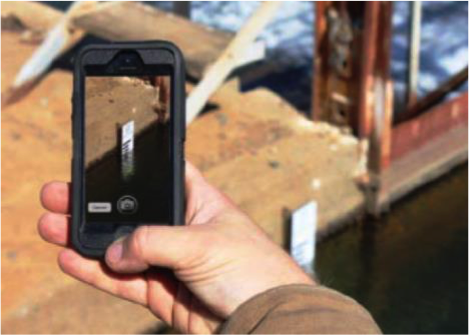
In Nam Cuong Commune in the Red River's delta, the project worked with the residents of three villages to develop such scenarios. The villagers regularly experience industrial waste flowing through their land from upstream and salt water flowing in from the sea, both of which affect their agricultural production and domestic water supply. At the same time they suffer from a lack of electrical energy and periodic flooding.
Project researchers devised various scenarios to improve flood protection and increase both water and electricity supply while governing flows from up and downstream. The costs and associated risks of these scenarios were presented and discussed until the villagers selected a development path they agreed was feasible.
According to a commune representative, Mr Luong Van Thanh, engaging the community in this action took some strategic thinking. “Many people were naturally sceptical at first. We have had people come here before collecting data and promising to come back with plans, but then we have never seen any plans.” The key this time was the premise of improved electrical power. “When the researchers said they could help plan better power supply as part of project, it opened a door in the minds of local people.”
The scenario selected by the villagers reduces water pollution by collecting dung from local livestock herds and using it in a biogas system to produce electricity. In a similar small-scale way, the problem of clean water supply is addressed by the installation of rainwater collection tanks at each household. The practicality of such measures is helping the commune move forward.
“We have taken our plans to the local authorities and said, ‘look we have a strategy and we can contribute labour and materials ourselves.’ They like this approach and are working with us to move forward funding for composting and biogas systems is now on the way.”
Such practical solutions to local problems are an integral part of the MK27 approach. Project coordinator Martine Rutten is proud of the project’s success in working with the Nam Cuong community and would like the opportunity to replicate the experience further across Vietnam.
“I think it’s important that the job of looking after water resources does not fall only on the shoulders of government agencies and scientists. While the partnership of Vietnamese and Dutch researchers has been successful in the planning sphere, this participatory planning approach shows that we can also apply science at local levels. We have good local partners, the GreenID NGO and HUNRE and have been able to develop a large team of citizen researchers that are really contributing to our work. This makes is possible to develop solutions that actually work in Vietnam.”





